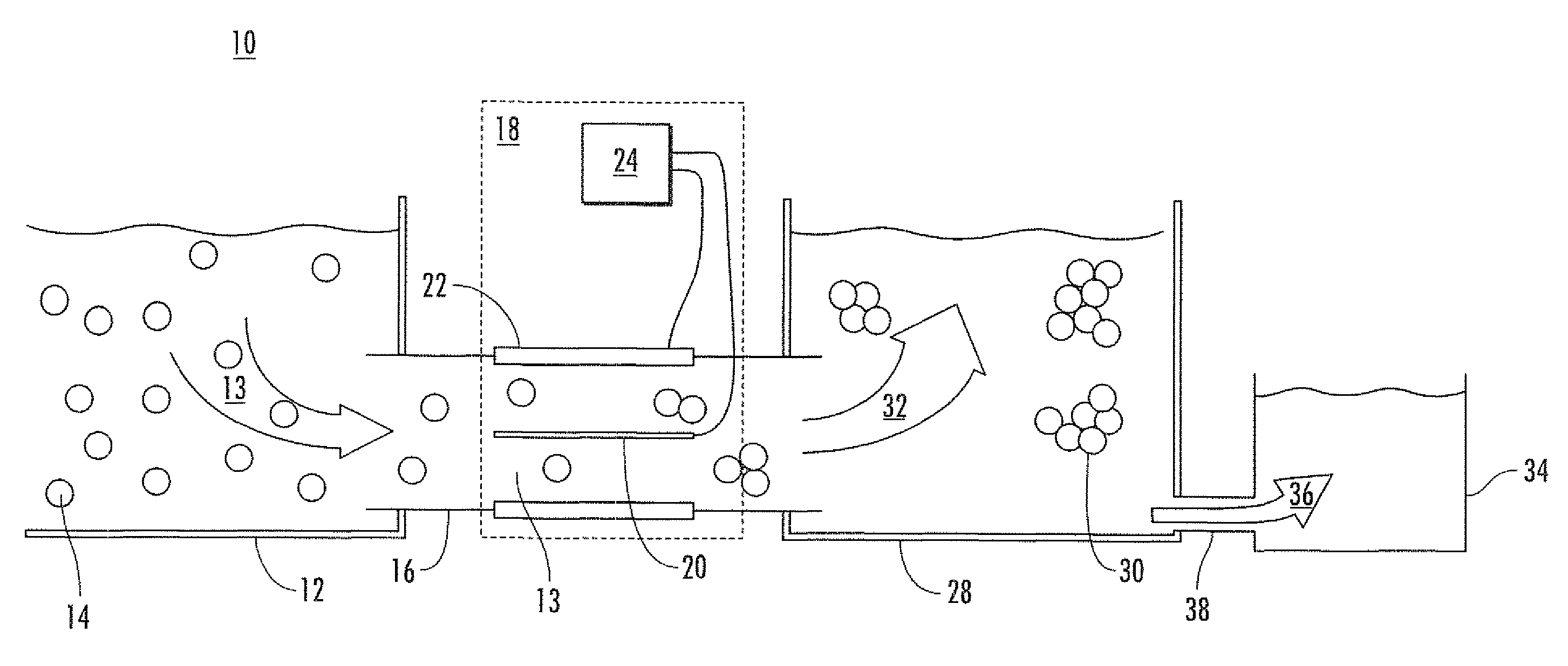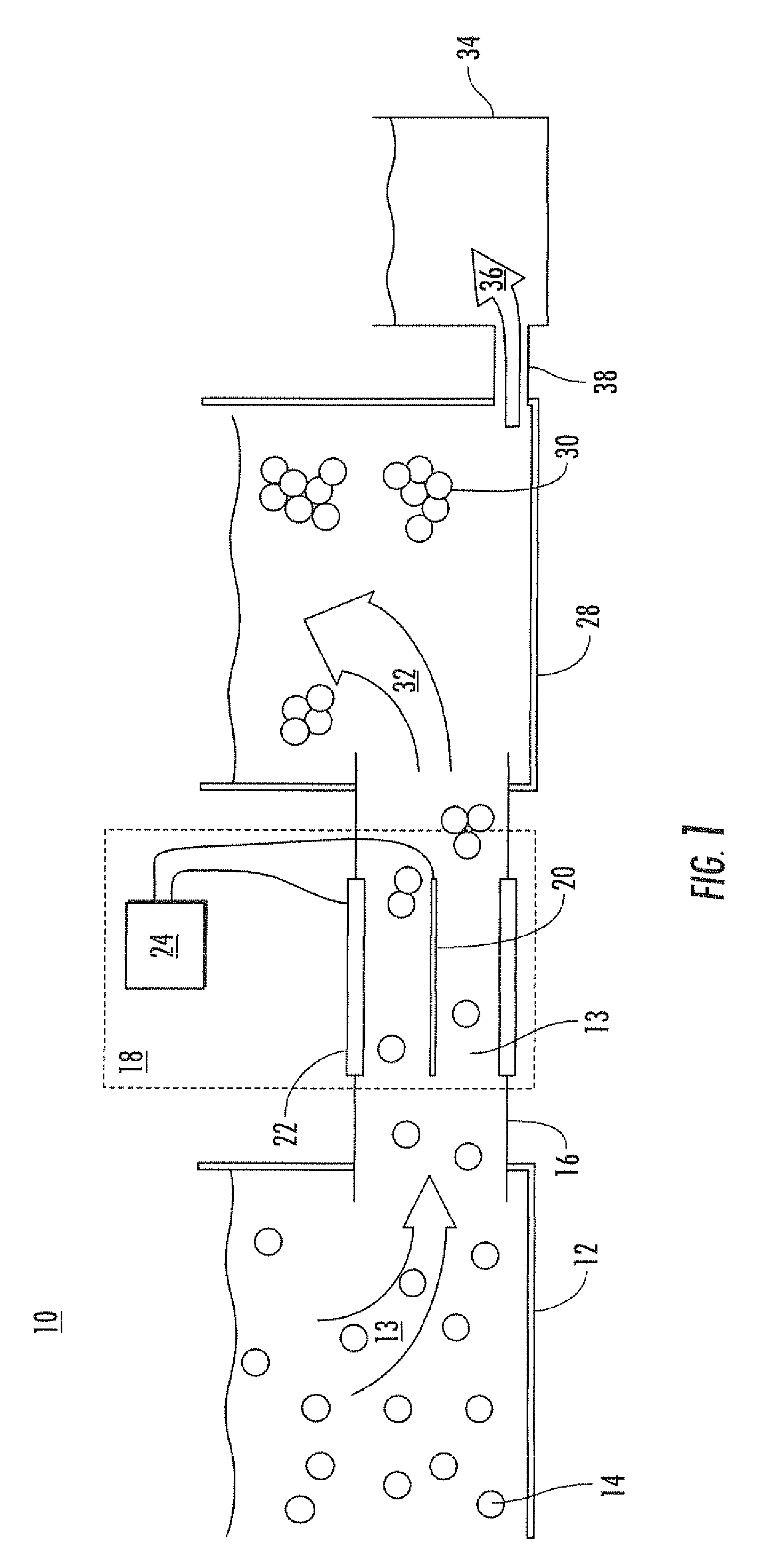System and method for high-voltage pulse assisted aggregation of algae
a technology of algae and high-voltage pulse, which is applied in the field of high-voltage pulse assisted algae aggregation and separation, can solve the problems that the existing methods of algae harvesting have not proved commercially viabl
- Summary
- Abstract
- Description
- Claims
- Application Information
AI Technical Summary
Problems solved by technology
Method used
Image
Examples
Embodiment Construction
[0012]The invention is drawn to a method and device for harvesting algae suspended in a liquid feed stream. It has been unexpectedly discovered that when nanosecond electric pulses are applied to a solution containing algae, the algae aggregate without the need for the addition of an aggregation agent. While not wishing to be bound by theory and while not necessary for practicing the invention, it is believed that the nanosecond pulsed electric fields produce nanopores which allow transport of ions, such as sodium, potassium and calcium, across the algae cell membrane thereby neutralizing the repulsion between individual alga. However, the nanopores produced by the nanosecond electric pulses are not large enough to allow lipids found in the algae to be released. Nanosecond pulsed electric fields of high field strength may also change membrane morphology and in particular dipole alignments in the membrane. In addition, nanosecond pulsed electric fields may change surface charge layer...
PUM
| Property | Measurement | Unit |
|---|---|---|
| electric field | aaaaa | aaaaa |
| peak power | aaaaa | aaaaa |
| peak voltage | aaaaa | aaaaa |
Abstract
Description
Claims
Application Information
 Login to View More
Login to View More - R&D
- Intellectual Property
- Life Sciences
- Materials
- Tech Scout
- Unparalleled Data Quality
- Higher Quality Content
- 60% Fewer Hallucinations
Browse by: Latest US Patents, China's latest patents, Technical Efficacy Thesaurus, Application Domain, Technology Topic, Popular Technical Reports.
© 2025 PatSnap. All rights reserved.Legal|Privacy policy|Modern Slavery Act Transparency Statement|Sitemap|About US| Contact US: help@patsnap.com


